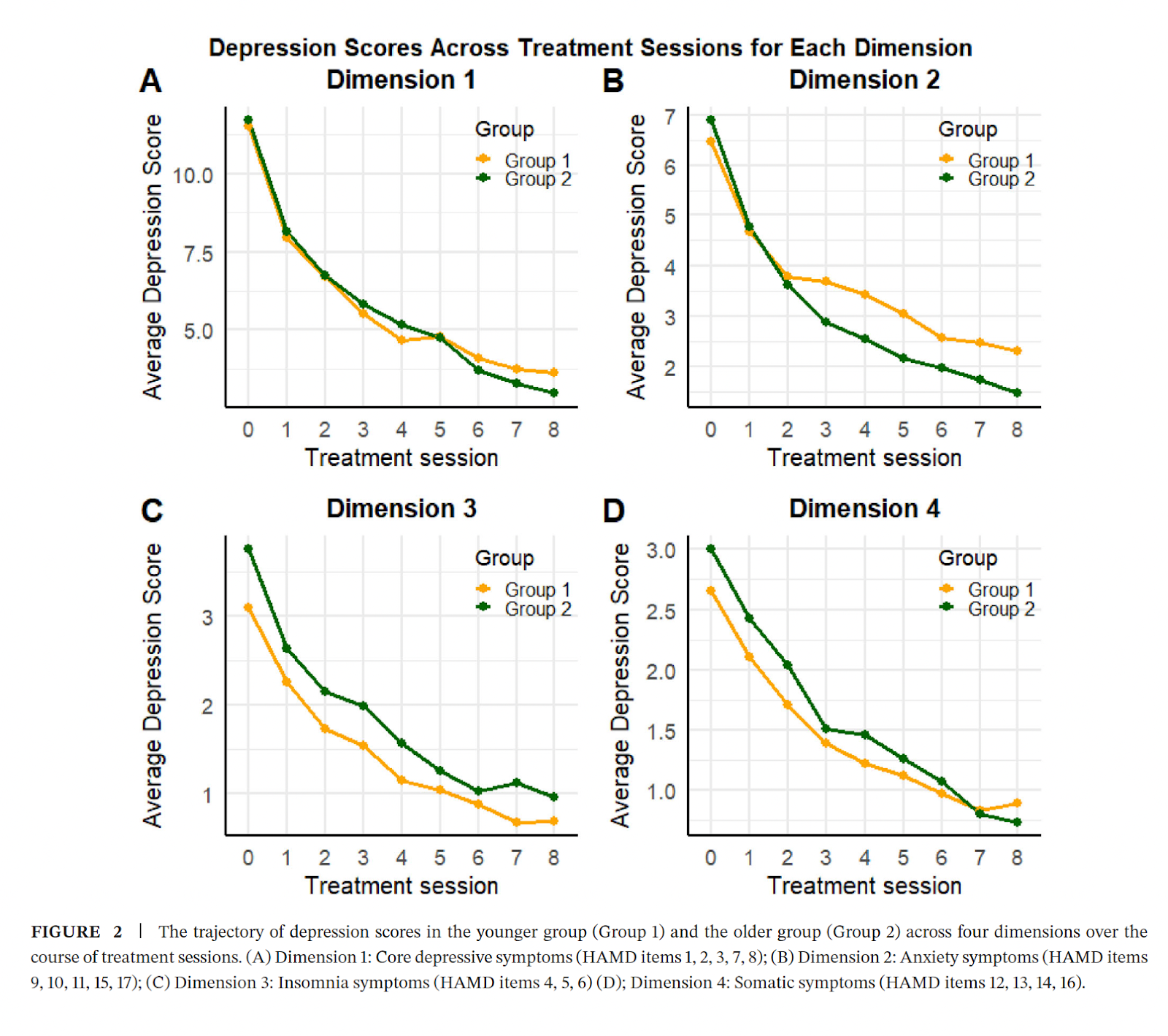Age-Dependent Efficacy of ECT in Depression: A Longitudinal Study of Symptom Trajectories and Treatment Predictions
Out on PubMed, from authors in China, is this paper:
Age-Dependent Efficacy of Electroconvulsive Therapy in Depression: A Longitudinal Study of Symptom Trajectories and Treatment Predictions.
Brain Behav. 2025 Apr;15(4):e70487. doi: 10.1002/brb3.70487.PMID: 40259691
Background: The variability in electroconvulsive therapy (ECT) efficacy for depression has received significant attention, particularly regarding the influence of age on treatment outcomes. However, studies examining the trajectory of ECT efficacy across different age groups remain limited.
Methods: This longitudinal study analyzed 1056 intensive longitudinal data measurements from 132 hospitalized patients diagnosed with major depressive episodes, categorized into a young group (<30 years, n = 69) and an older group (≥30 years, n = 63). Depression severity was assessed using the Hamilton Depression Rating Scale-17 (HAMD-17) at baseline and within 24 h after each ECT session, with data collected for up to eight treatments. Statistical analyses included linear mixed-effects model (LMM), survival analysis, and linear regression to evaluate the impact of age on ECT efficacy, the predictive ability of depression scores, and differences in symptom dimension improvements (core depressive symptoms, anxiety, insomnia, and somatic symptoms).
Results: LMM analysis revealed that each ECT session significantly reduced total HAMD-17 scores (β = -2.166, p < 0.001), with greater improvement observed in the older group (β = 0.463, p < 0.001). Symptom dimension analysis showed significant reductions in core depressive symptoms, anxiety, insomnia, and somatic symptoms, with greater improvement in anxiety and somatic symptoms in older patients. Kaplan-Meier analysis showed that the older group achieved remission with fewer sessions than the younger group (median: 5 vs. 7, χ2 = 4.100, p = 0.042). However, Cox regression identified baseline HAMD-17 scores (hazards ratio [HR] = 0.945, 95% confidence interval [CI]: 0.914-0.977, p = 0.001) and the use of serotonin-norepinephrine reuptake inhibitors (HR = 1.52, 95% CI: 1.075-2.151, p = 0.018) as significant predictors of remission, thereby eliminating the initial group difference. In the older group, both baseline and first post-ECT HAMD-17 scores predicted the number of sessions required (R2 = 0.125, p = 0.016; R2 = 0.134, p = 0.017), whereas in the younger group, only first post-ECT scores were predictive (R2 = 0.282, p = 0.001).
Conclusion: Age significantly influences ECT efficacy and the prediction of treatment requirements, with older patients exhibiting better responsiveness. Initial depression scores effectively predict the number of treatments required, supporting the need for age-specific, personalized ECT treatment strategies.
Keywords: age differences; depression scores; electroconvulsive therapy; personalized treatment; symptom dimensions; treatment prediction.
The article is here.
And from the text:
Here is yet another look at age as a factor in ECT response. The replication of HAM-D decrement after the first treatment as a response predictor is interesting.
But really, how many angels can dance on the head of the ECT-age pin? One would never deny or prescribe ECT based on a patient's age; it's the clinical picture and history that count. The idea that data such as found in this paper can lead to "precision" psychiatry is a bit far-fetched...








Comments
Post a Comment